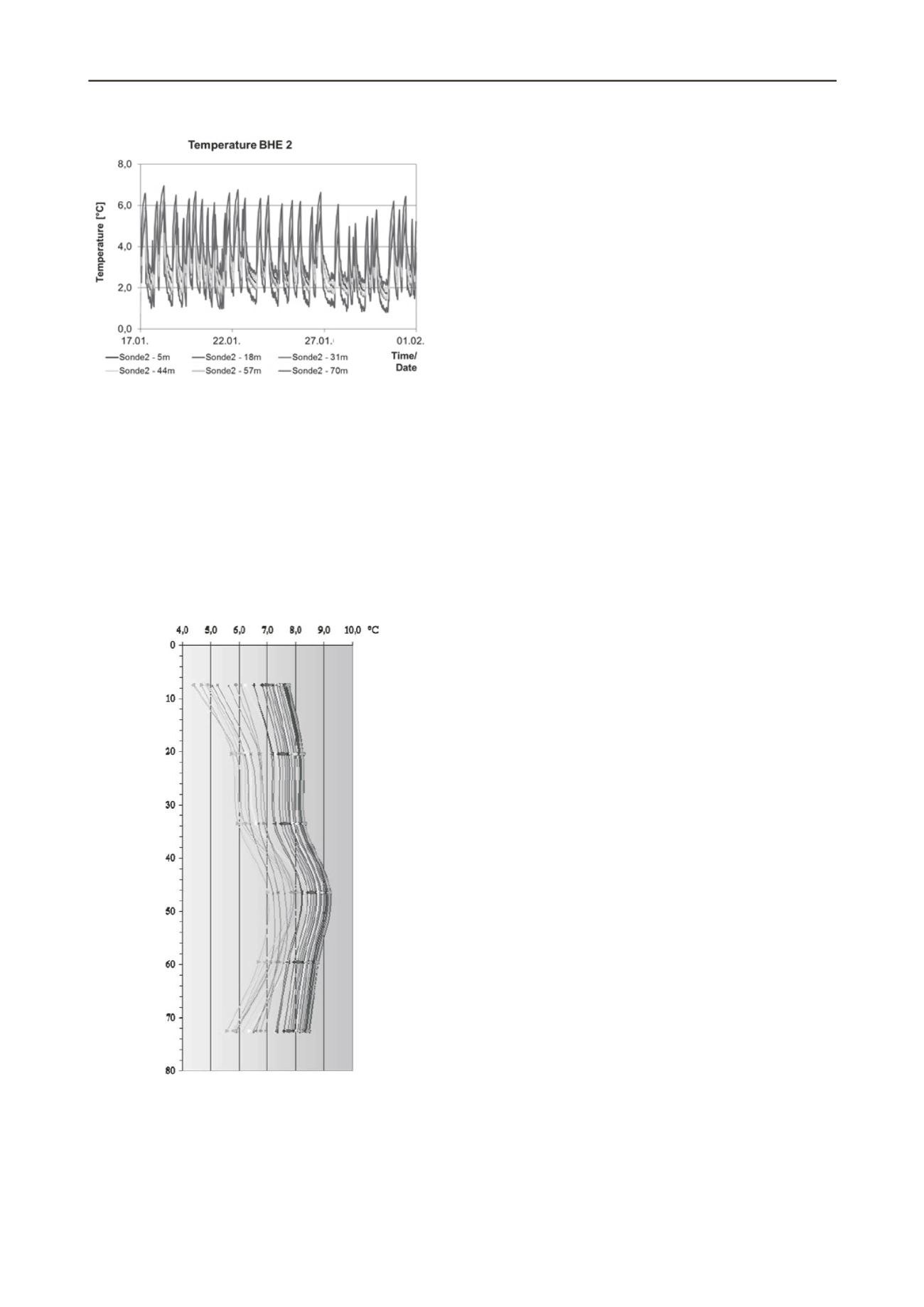
3361
Technical Committee 307 + 212 /
Comité technique 307 + 212
4 SUMMARY
Geothermal Borehole Heat Exchangers using geothermal heat
pipes for convective energy withdrawal and transport from and
with the soil are a particularly efficient technology.
A method has been developed to compute the heat transport
of a Geothermal Heat Pipe Borehole Heat-Exchanger.
Furthermore, long-term measurement data have been
collected from a Geothermal Heat Pipe Borehole Heat-
Exchanger installation. They have been successfully used to
compute the expected heat power output and the systems’
operation.
5 REFERENCES
Dunn, P.D.; Reay, D.A. (1993). Heat Pipes. University of Reading,
Reading UK, Heriot-Watt University, Edinburgh, UK. Fourth
Edition.
Figure 5: Temperature records
Especially the temperature distribution in depth and time
along the heat-pipe borehole heat exchangers allows to identify
the operation of the heat-pipes in detail:Figure 6 shows the
temperature distribution at a specific borehole heat exchanger at
different states of operation. One can observe that the
temperature distribution is not linear. From this distribution
information on the state of operation (bath or film evaporation)
can be derived.
Lee, Y.; Mital, U. (2003). A two-phase closed thermosyphon.
Department of Mechanical Engineering, University of
Ottawa 2, Ottawa, Canada.
Temperature [°C]
Depth [m]
Figure6: Temperature profiles of a particular heat pipe borehole heat-
exchanger within 24 h (30 min interval, the colors ranging red-yellow-
green-blue-black)


